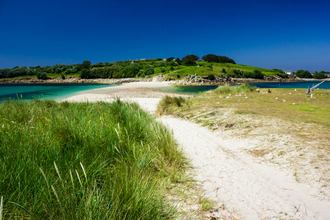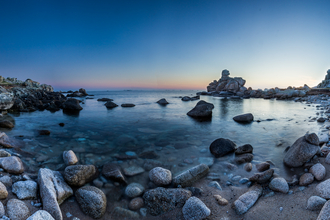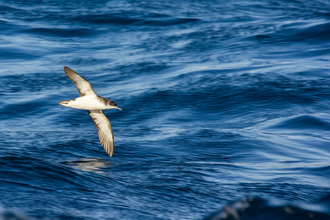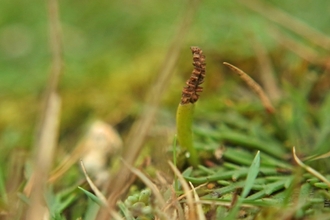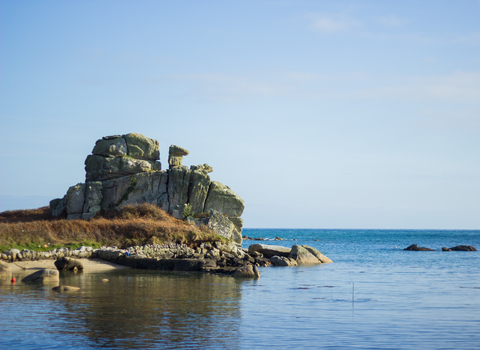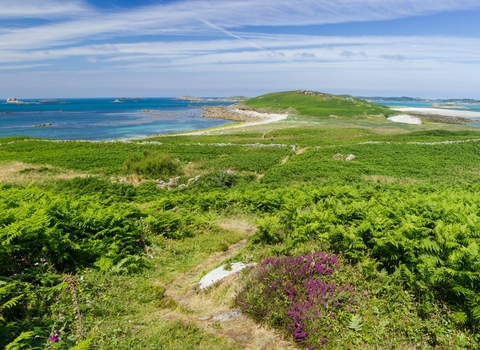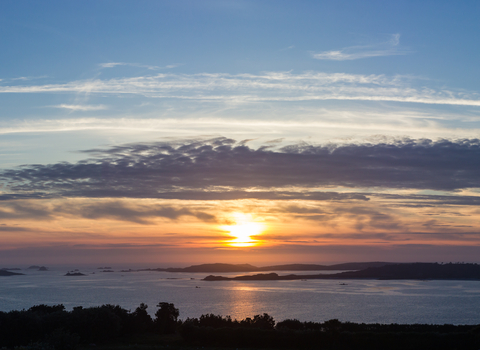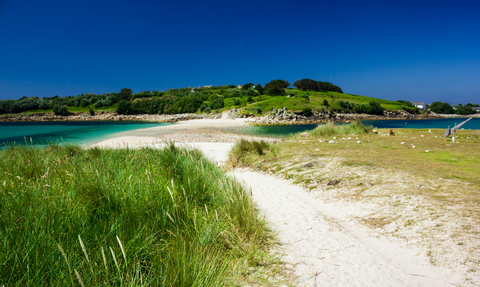
St Agnes & Gugh
The Wild Atlantic Edge
The isolated, craggy island of St Agnes enjoys a unique atmosphere, feeling wild and isolated compared to the rest of the archipelago. It is connected to its close neighbour, Gugh, by a sandy tombolo. Both islands have benefited from a concerted conservation programme to support our breeding seabirds: the Isles of Scilly Seabird Recovery Programme.
St Agnes and Gugh are a 20-minute boat ride away from St Mary's. Being right out on the Wild Atlantic Edge, and with only 80 or so permanent residents, this is the best island to explore if you're after a really 'wild' atmosphere. From the stony beach of Periglis to the hidden subtropical Covean beach, from the winding, sheltered lanes that cut through the middle of St Agnes to the vast and towering granite rock formations on the southwestern coast, these are islands of wild contrasts. Gugh is only accessible at low-tide, so check the tide times with your boatman before taking the walk across.
One of the most striking areas of St Agnes is Wingletang Down, which is home to a diverse collection of rare and interesting plants, most notably the small and elusive least adder’s-tongue fern. The sole UK population of the fern is concentrated to small areas of this wild heathland, where you'll also find populations of allseed and golden hair-lichen. The four-leaved allseed is rare in Britain but abundant in Scilly, growing in sandy soils and coastal areas of St Agnes. The attractive, saffron-coloured golden haired-lichen is more vulnerable and can be found growing on rocks and short heathland turf near Beady Pool.
On St Agnes, the two freshwater pools — Big Pool and Little Pool — offer fascinating wetland environments. The vegetation there sometimes has a brackish influence due to the rise of seawater during stormy weather. The sandy grass near Big Pool is especially good for wild chamomile, easily recognisable by its sweet, fragment scent on warm days.
Connected to the east side of St Agnes by the tombolo known as ‘The Bar,’ Gugh is a small island just 1km long and rising to 34m above sea level. The low-lying heathland at the southern end supports populations of the rare orange bird’s-foot and hairy bird’s-foot, along with rare lichen species including the ‘lung’ lichen and golden-hair lichen. Between the two heathlands and along the coastal edge, maritime grassland is awash with abundant thrift. Centrally, the area is dominated by bracken.
The island also supports the largest lesser black-backed gull colony in the archipelago, along with the only remaining breeding colony of kittiwakes. Manx shearwater and storm petrel are now breeding, too, since the successful Seabird Recovery Project (2013-2017) successfully removed rats from both islands.
Wild places to explore on St Agnes
Explore these special places for wildlife on St Agnes
Special species on St Agnes
Find out more about the species you might see at different times of year on St Agnes...

